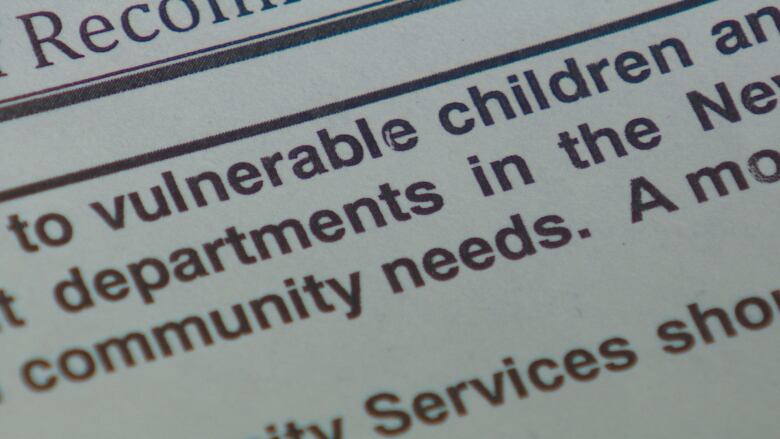How New Brunswick's child death review system works
Committee was created after the horrifying death of 28-month-old Jackie Brewer in 1996

For the past two decades, a committee has quietly investigated the unnatural deaths of children who had become known to child protection officials.
- The Lost Children: The secret life of death by neglect
- Jackie Brewer, the 2-year-old who was ignored to death
Here are some answers to questions you may have about how the committee works and why it was created:
Why was the committee formed?
The committee was formed in 1997, after anger over the death of two-year-old Jacqueline Dawn Brewer in Saint John.
Who sits on it?
The committee is made up of experts, including a regional coroner, pediatrician, police officer, lawyer, social worker and First Nations representative.
Current members are:
- Jerome Ouellette, regional coroner, acting chair
- Randy Hansen, Miramichi police
- Gloria Sacobie, St. Mary's Family Services
- Hlne Albert, University of Moncton department of social work
- Dr. Susan Sanderson. pediatrician
- Dr. Ken Obenson, pathologist
- Vacancy,for a lawyer
What does the committee do?
Its job is to review details of child deaths and make recommendations to help prevent similar deaths and improve services.
Originally, the committee reviewed only the deaths of children in care or whose families received services from the Department of Social Development the previous year.
In 2009, the committee was given the power to review the death of any child under 19.
How does it work?
Child protection officials tell the chief coroner a death has occurred. The chief coroner asks the committee to do a review, and it has 45 days to complete it.
Once the review is finished, the findings are presented to the chief coroner. Within 10 days, he must forward the recommendations to the Department of Social Development.
Are there any limitations on the committee's work?
It can't assign blame or make recommendations about a social worker's conduct, for example, that would lead to discipline of that person at work.
How much of the committee's work does the public see?
The recommendations, without any context, are made public.
The public is not allowed to know how a child died, what led to the death or if the death could have been prevented. The age and gender of the child and where the child lived are also withheld.
The minister's response to the recommendations is also made public. But many of those responses don't promise any specific action.
How many children are dying?
According to the coroner's office, 136 deaths have been referred to the committee since 1997.
Seventy-eight were due to natural causes, such as cancer. At least 53 deaths were deemed "other," which could mean anything from a car crash to neglect to suicide.
Have all those cases been reviewed by the committee?
Not necessarily. The committee has the discretion to not review a case where a child has died from natural causes.
How are these children dying?
The province considers a person's cause of death private health information, which prevents the provincial government from talking about it, according to Elaine Bell, a spokeswoman with the Department of Justice and Public Safety.
In addition to privacy legislation, the government says child death reports are considered confidential "advice to minister."
The coroner publishes an annual report with statistics on how people have died in the last year.
But it doesn't break down how many of those cases received a child death review.
Is it working?
With many details kept secret, and no means of following up on past recommendations, it's difficult to tell what has changed over the past 20 years.
The coroner's office is conducting a 10-year review of child deaths this year. It's not clear how detailed that report will be or if it will be made public.
Jackie Brewer, the 2-year-old who was ignored to death
How New Brunswick's child death review system works
Part 2:The Lost Children: 'A child that dies shouldn't be anonymous'
Haunted byJuli-Anna: An 'agonizingly painful' preventable death
Part 3:The Lost Children: Change on horizon for First Nations child welfare
Mona Sock, a life stolen by abuse
Part 4:The Lost Children: Government weighs privacy over transparency in child deaths
Baby Russell: A few minutes of life, then a knife in the heart
Do you have a tip about this story? Get in touch with CBC New Brunswick Investigates by clickinghere.













_(720p).jpg)


 OFFICIAL HD MUSIC VIDEO.jpg)
.jpg)



























































































